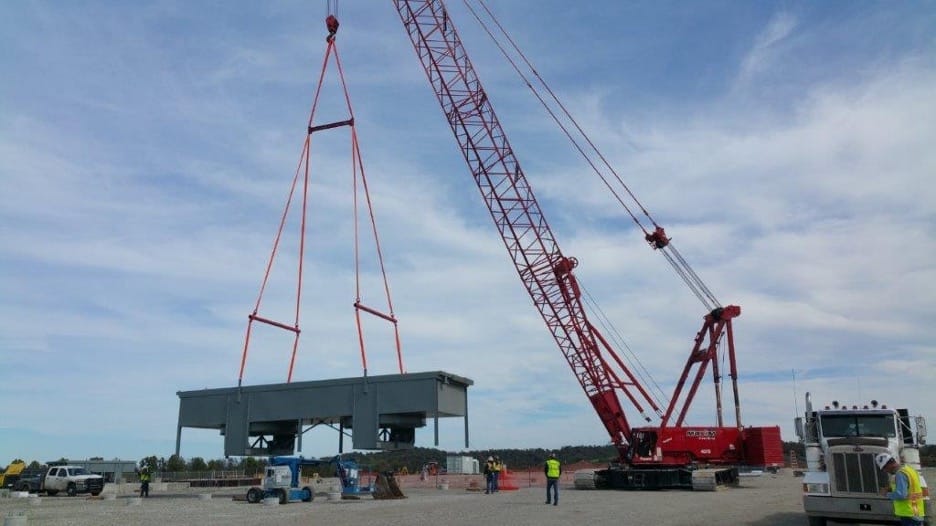Choosing the right crane for your construction project is not just a matter of equipment availability; it’s about ensuring optimal efficiency and cost-effectiveness throughout your project’s lifecycle. Maxim Crane stands at the forefront of crane rental services, offering a diverse range of options tailored to meet specific project needs, from infrastructure development to industrial applications. Whether it’s maneuvering through rugged terrain or lifting heavy loads in a confined urban space, understanding the functionalities and advantages of each crane type provided by Maxim Crane can significantly influence your project’s success.
This guide will delve into various crane types such as All-Terrain Cranes, Boom Trucks, and Tower Cranes, highlighting how each can be utilized effectively in different project environments. Join us as we explore these powerful machines and how Maxim Crane’s expertise can elevate your next project.
Introduction to Cranes
Cranes have been an essential tool in construction for centuries. They are designed to lift, lower, and move heavy loads vertically and horizontally, providing the muscle necessary to move materials and equipment in and out of construction sites. In addition to their lifting capabilities, cranes offer a range of benefits that make them indispensable on construction projects:
- Versatility: Cranes come in different sizes and types, making them suitable for a wide range of project applications.
- Mobility: The ability to move around the job site quickly reduces setup time and enhances operational efficiency.
- Cost-Effective: Renting cranes eliminates the need to purchase expensive equipment for short-term projects.
With the construction industry becoming increasingly complex, the need for specialized cranes tailored to meet specific project needs has also risen. Maxim Crane has emerged as a leading provider of crane rental services, offering not just a diverse range of cranes but also comprehensive support and expert engineering that ensures successful project execution.
Crane Selection: Factors to Consider
Selecting the ideal crane for a project goes beyond simply choosing a model that can lift the heaviest load. Professional project managers and construction experts must consider several crucial factors that can significantly influence the efficiency and success of their operations. Here’s a breakdown of the key aspects to consider when choosing a crane:
Project Environment Adaptability
The physical conditions of a project site can greatly impact the functionality and suitability of crane equipment. Important considerations include:
- Terrain Type: Smooth, paved areas differ vastly from uneven, rugged landscapes.
- Space Constraints: The amount of available space can dictate the size and type of crane you can feasibly use.
- Environmental Noise Limits: In urban settings, noise limits may restrict crane use.
- Obstructions and Overhead Hazards: Determine if the site has any overhead wires, trees, or other obstructions that may limit the crane’s movement.
Maxim Crane’s fleet of cranes is purpose-built to handle different project environments, ensuring seamless functionality regardless of the project’s location or conditions.
Load and Lifting Capacity Requirements
Every crane has a maximum lifting capacity, and choosing a crane that fits the load requirements of a project is pivotal. Consider:
- Weight of Materials: Evaluate the heaviest items that the crane will need to lift.
- Range of Load Sizes: Identifying if loads vary significantly can influence whether a versatile crane type is necessary.
Matching the crane’s capacity to the project’s needs ensures not only safety but also operational efficacy.
Site Area Limitations and Accessibility
The physical layout and accessibility of a project site can limit crane options. Key considerations include:
- Crane footprint: The amount of space a crane occupies when stationary.
- Streaming space for crane operation: Assess whether the crane will have adequate room to maneuver and operate effectively within the project area.
- Access routes: Ensuring there are suitable paths for the crane to reach and leave the site.
Proper analysis of site dimensions and access points will help in selecting a crane that can be easily transported to, installed, and operated within the project constraints.
By thoroughly assessing these factors, project managers and construction professionals can select the most suitable crane type from Maxim Crane’s diverse fleet, ensuring optimal performance for their specific project needs.
All-Terrain Cranes
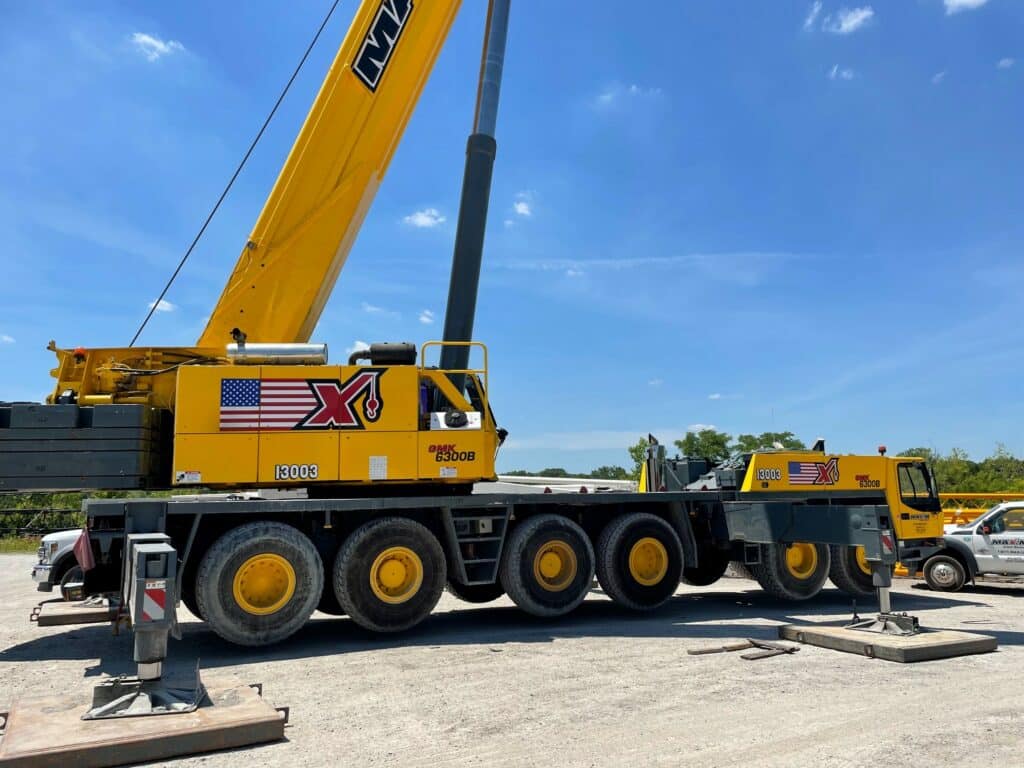
All-Terrain Cranes offer a unique combination of mobility and power, making them a highly effective choice for various challenging construction environments. These cranes merge the substantial lifting abilities commonly associated with larger crane types with the flexibility to traverse diverse landscapes effortlessly. Their versatility allows them to manage substantial weights and deliver reliable performance, essential for significant commercial construction projects.
Features
All-Terrain Cranes are equipped with multi-axle pneumatic tires and all-wheel drive systems, which enhance their mobility across both asphalt and rough surfaces. This adaptability makes them perfect for projects that require frequent transitions between different job sites with varied ground conditions.
Suitable Environments and Typical Uses
These cranes excel in environments requiring high mobility and heavy lifting, such as large-scale commercial construction, infrastructure development, and industrial projects. Their ability to move quickly between sites and set up rapidly without sacrificing lifting power makes them a favored choice in dynamic project landscapes.
Maxim Crane Offerings
Maxim Crane provides an extensive range of All-Terrain Cranes, distinguished by their advanced technology and superior engineering. Some of the standout features in Maxim’s offerings include advanced telescopic booms and exceptional lift heights, which aid in efficiency and high performance in complex lifting operations. The fleet includes models like the ATF-220G-5, renowned for its strong lift capacity and ease of maneuverability in tight spaces.
By opting for Maxim Crane’s All-Terrain Cranes, project managers gain access to cranes that are not only powerful and versatile but also backed by comprehensive support and service. Every lifting need, no matter how complex, is met with precision and reliability.
Carry Decks
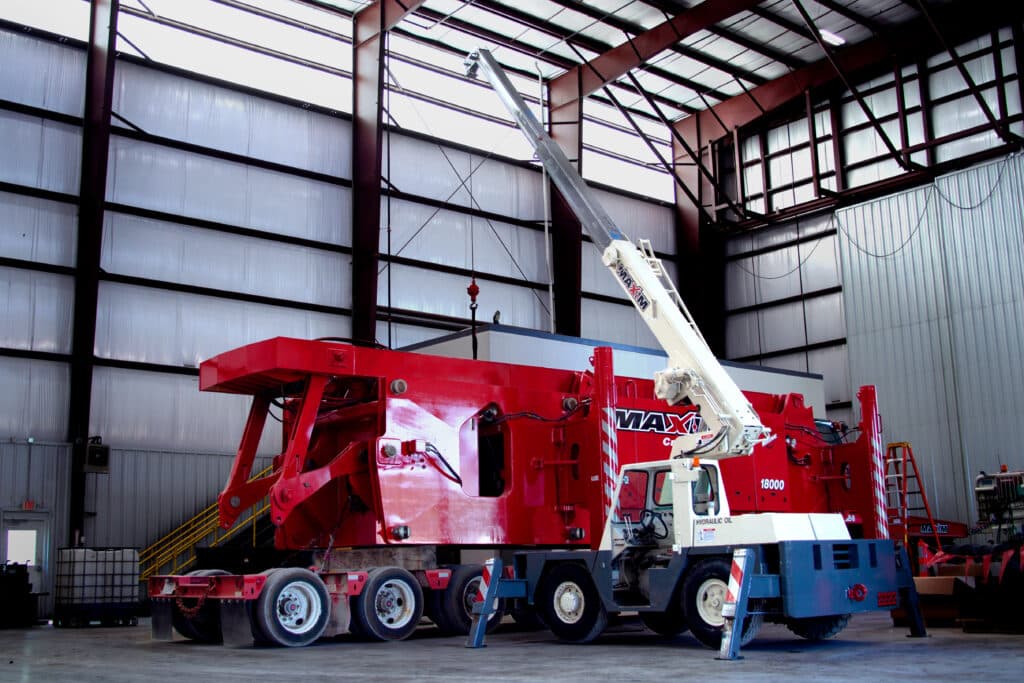
Carry decks, with their compact design and 360-degree rotating booms, bring a unique set of advantages to projects requiring crane mobility and precise lifting in confined spaces. These cranes are especially valuable in complex industrial setups and landscapes where maneuvering larger equipment can be challenging. Carry decks offer an optimal combination of power and agility, making them a perfect tool for handling materials within tight quarters where larger machines simply would not fit.
Unique Design Features
- Compact Dimensions: Specially designed to work in limited space areas, the small footprint of carry decks allows them to navigate narrow passageways and doors, a feature larger cranes cannot offer.
- 360-Degree Boom: The rotating boom enables lifts from various angles, which is essential in settings like indoor factories or congested plant floors. This functionality increases the crane’s versatility and reduces the need to reposition the equipment frequently.
Maxim Crane Offerings
Maxim Crane stands out through its comprehensive selection of carry deck models that cater to varied lifting needs. Each model has been curated for efficiency during operation while offering unique applications that enhance project execution:
- Model Examples: Maxim Crane’s fleet includes several well-known carry deck models, each chosen for its reliability and performance in the field.
- Specialized Applications: Beyond standard lifts, these carry decks enable operations like equipment installation and machinery repairs where precision placement of heavy items is crucial.
Whether tackling maintenance in an industrial plant or managing logistics in a cramped construction site, Maxim Crane’s carry deck solutions bring the powerful combination of compact design and superior functionality to ensure project needs are not just met, but exceeded.
Boom Trucks
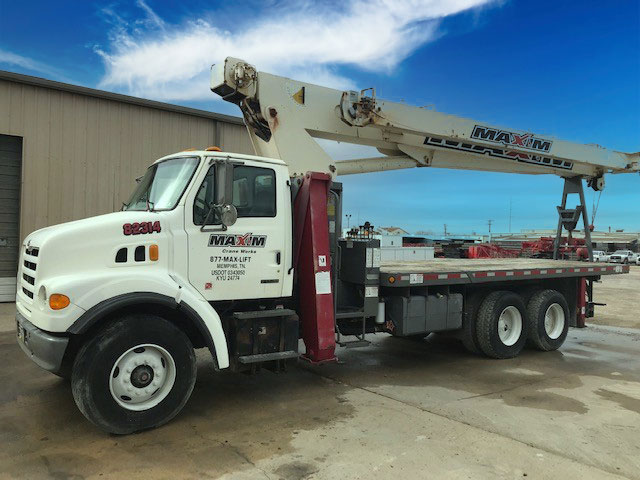
Boom trucks stand out as a versatile and practical choice for many construction projects, owing to their easy operation and effective lifting capabilities. Unlike larger, more cumbersome cranes, boom trucks are equipped with a hydraulic arm mounted on a standard truck chassis, making them ideal for multiple quick tasks requiring mobility and speed.
Features
Boom trucks come with the dual functionality of a traditional truck and a crane. This unique setup allows them to travel at highway speeds, reaching project sites effortlessly. While they handle lighter loads compared to larger crane models, boom trucks excel in jobs that demand fast setup and operational flexibility.
Common Usage Scenarios
- Short-term Projects: Quick deployments at construction sites where installing a larger crane would be impractical.
- Urban Construction: Ideal for city projects due to their ability to navigate through tighter spaces and perform lifts in confined areas.
- Utility Work: Often used in maintenance of electric utility lines and installations where their quick setup and breakdown significantly improve project efficiency.
Maxim Crane Offerings
Maxim Crane provides an array of boom truck models that are designed to meet diverse project needs. These trucks are maintained to the highest standards for reliability and performance on-site. Here are some examples where Maxim Crane’s offerings stand out:
- Advanced Fleet: Ranging from models with basic functionalities for small-scale operations to more advanced setups for complex lifting tasks.
- Skilled Crane Operators: Maxim Crane provides experienced operators for projects that require skilled crane handling.
- Customer Service: Round-the-clock support and on-site assistance for optimal operation efficiency.
By integrating robust machinery, expert support, and versatile applications, Maxim Crane’s boom trucks are an invaluable asset to any construction or maintenance project where precision and adaptability are essential.
Rough Terrain Cranes
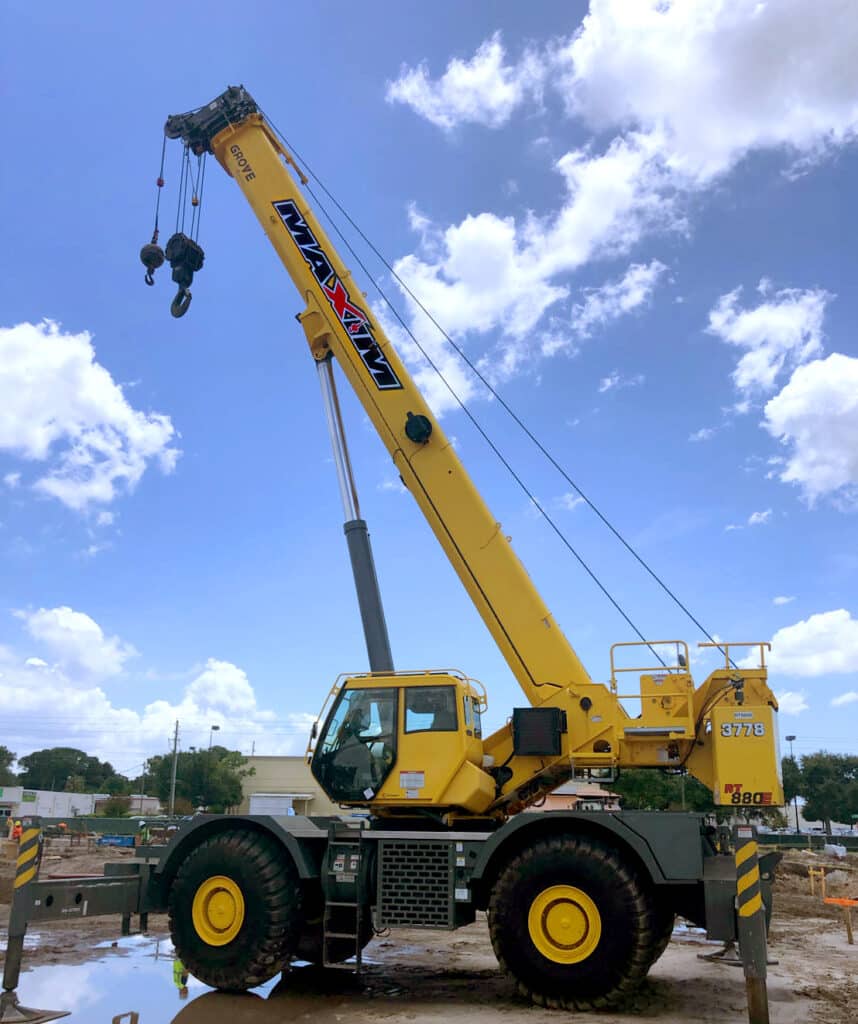
Rough Terrain Cranes are specifically engineered to offer robust performance in complex, rugged environments where other cranes might struggle. Known for their impressive mobility on tough terrains, these cranes are equipped with specialized features to ensure they can maneuver through narrow and uneven spaces effectively.
Key Features and Lift Capacity
These cranes provide substantial power for various project sizes. Equipped with four rubber tires and designed for optimal weight distribution, Rough Terrain Cranes are ideal for operations that require frequent setup and teardown as they can be quickly moved across sites without requiring additional transport equipment.
Typical Project Environments
Due to their strong build and maneuverability, Rough Terrain Cranes are particularly suited for industries with challenging operational conditions such as:
- Refineries
- Power stations
- Large construction sites with uneven terrain
Their design caters to the precise handling required in such complex environments, making them indispensable in sectors focused on infrastructure and industrial development.
Maxim Crane Offerings
Maxim Crane boasts a diverse range of Rough Terrain Cranes, each characterized by specific models tailored to meet different operational demands. Some standout features of Maxim Crane’s offerings include:
- Advanced maneuverability in confined spaces.
- High-end features to aid in ensuring secure operations under rugged conditions.
- Technology integrations for enhanced operational efficiency.
By selecting from Maxim Crane’s extensive inventory, project managers can ensure they have access to a crane that not only meets but exceeds the typical requirements of a challenging project environment.
Tower Cranes
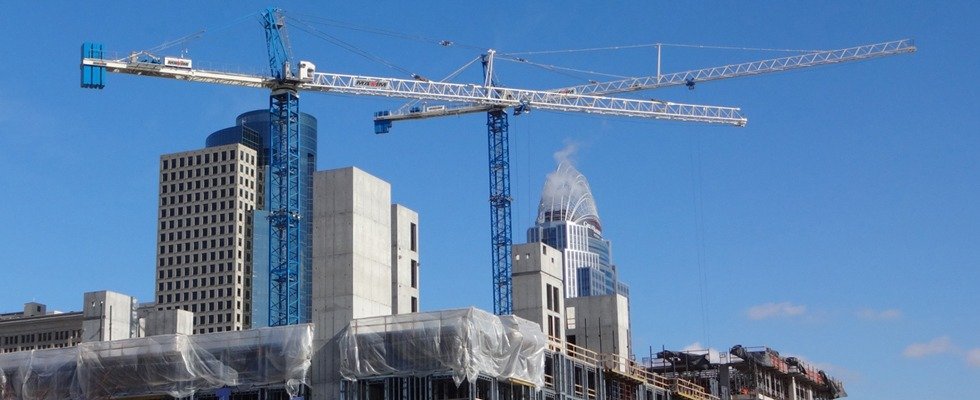
Tower cranes are specifically engineered to manage the demands of high-rise building projects, offering the capacity to lift heavy materials to great heights seamlessly. Characterized by their impressive height capabilities and robust lifting capacities, tower cranes are indispensable on any skyscraper construction site.
Towering Heights and Heavy Loads
Tower cranes can reach impressive heights, often soaring up to 1,000 feet. This makes them particularly well-suited for constructing tall structures, such as high-rise buildings and skyscrapers. Their robust and stable tower design allows for efficient and safe lifting of large quantities of heavy materials like steel beams and concrete blocks to elevated heights, making them indispensable in any ambitious construction project aiming for the sky.
Varied Crane Styles for Skyscraper Construction
Maxim Crane is equipped with a range of tower crane models designed to meet the unique demands of various construction environments:
- Hammerhead cranes: Offer great balance and rotational capacity, perfect for projects requiring repetitive motions.
- Luffing jib cranes: Ideal for use in tight spaces due to their ability to lift loads vertically, particularly useful in cityscapes where other cranes might not fit.
- Self-erecting tower cranes: Known for their quick setup and dismantling times, these cranes are best suited for shorter-duration projects that require frequent moving of the crane around the site.
Each model provided by Maxim Crane incorporates cutting-edge technology that enhances operational efficiency and optimizes time and resource usage on construction sites. Directors and project managers can select from these various styles to find the ideal match for their specific structural and logistical requirements so that each project achieves its timeline and budget goals with added engineering precision.
Hydraulic Truck Cranes
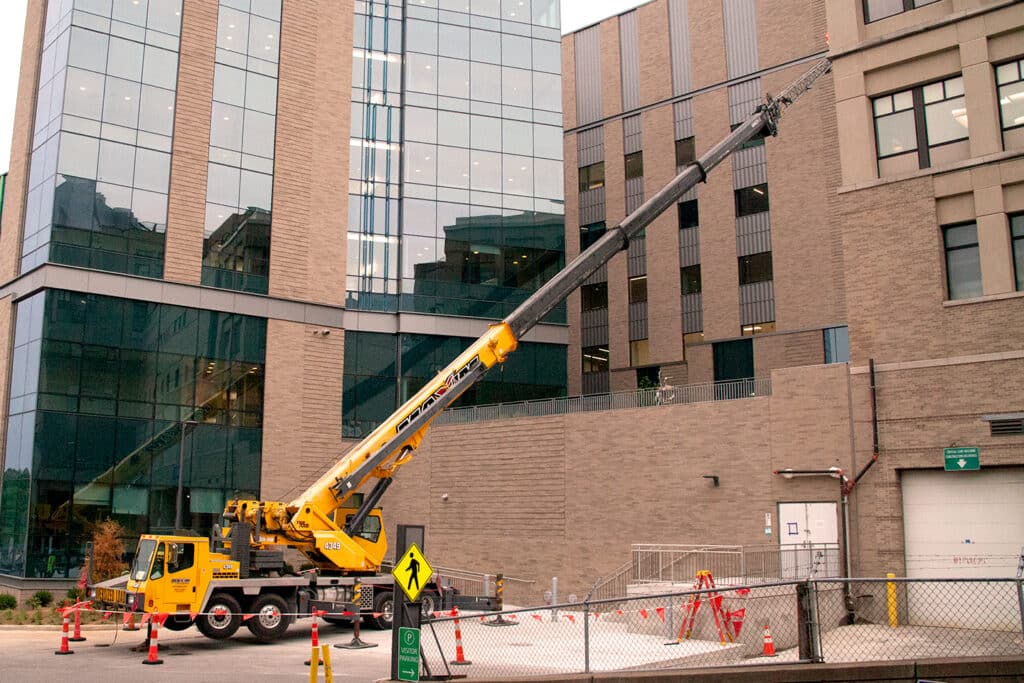
Hydraulic truck cranes are renowned for their dual capabilities: substantial lifting power and the ability to travel on public roads. These machines combine mobility with robust performance, thanks to their advanced hydraulic mechanisms that allow for precise control and versatility. This makes hydraulic truck cranes ideal for a variety of tasks, including transporting heavy loads and conducting maintenance on electric lines. With their versatile functionality, these cranes are an asset in various construction and maintenance projects.
Key Features and General Uses
Hydraulic truck cranes are designed to be road-legal, which allows them to move quickly from one site to another without requiring special transportation. This feature is particularly beneficial in projects that span multiple locations. The cranes’ substantial lifting capacity makes them suitable for a wide range of lifting tasks, from installation of large industrial components to setting up of prefabricated structures.
Maxim Crane Advantages
Maxim Crane takes pride in its fleet of hydraulic truck cranes, which are meticulously maintained for optimal performance and reliability. The company emphasizes ease of maintenance and operational flexibility, ensuring that each crane can be quickly adapted to meet the specific needs of various projects. This adaptability, combined with knowledgeable engineering support from Maxim Crane, helps streamline project timelines and reduce costs, providing an efficient lifting solution for project managers and contractors.
Crawler Cranes
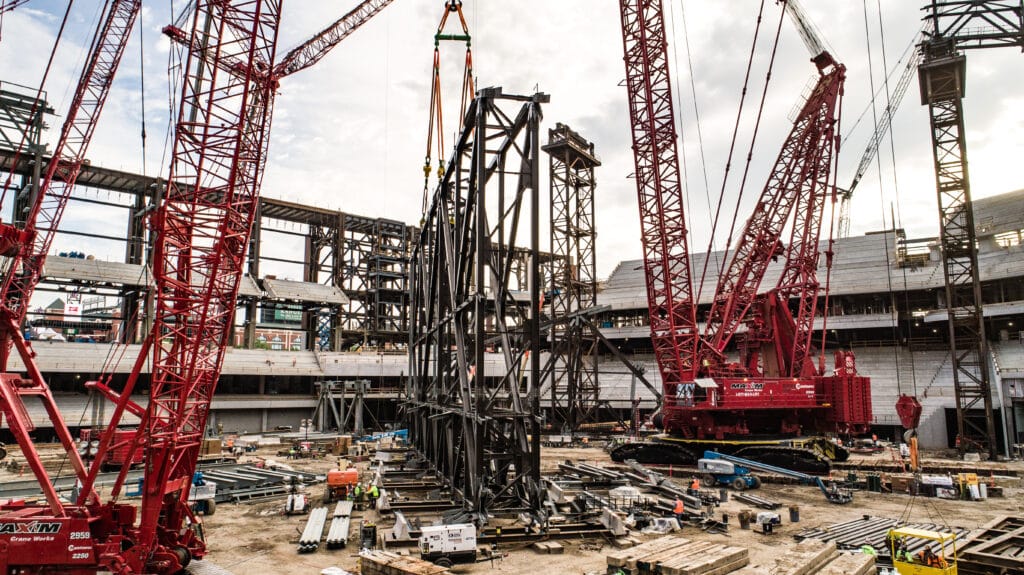
Crawler cranes, renowned for their robust stability and impressive mobility on tracks, are essential for managing heavy lifting tasks in challenging environments. These cranes are built to handle a broad range of heavy-duty industrial projects, making them indispensable for large-scale operations.
Features
Crawler cranes are distinguished by their track-based movement system, which provides superior stability and mobility on soft ground, uneven terrains, and confined spaces. This capability is crucial in minimizing setup time and adapting to various site conditions without the need for extensive ground preparation.
Application Areas
Crawler cranes are versatile in their application, making them ideal for demanding projects across different sectors:
- Construction of tall structures: Their stability and lifting capacity allow for the placement of heavy steel beams and other structural components.
- Dockside operations: These cranes can manage the loading and unloading of heavy cargo due to their high capacity and controlled movement.
- Complex terrain projects: Whether it’s a mining operation or a large infrastructure project, crawler cranes can navigate through and operate efficiently in rugged environments.
Maxim Crane Specialties
Maxim Crane stands out with its fleet of crawler cranes, featuring models designed for optimal performance in specific conditions:
- Model Variability: Maxim Crane offers a variety of crawler cranes, ensuring a match for any lifting requirement and operational condition.
- Site Suitability Analysis: Each rental comes with knowledgeable consultation to determine the best crane model for specific site conditions and project needs.
- Advanced Technology: Incorporating the latest in crane technology, Maxim Crane’s crawler cranes offer not only lifting power but also enhanced features and operational efficiency.
By choosing Maxim Crane for a crawler crane rental, project managers can rely on tailored solutions and comprehensive support, optimizing their project outcomes with efficiency and reliability.
Comprehensive Crane Services by Maxim Crane
Maxim Crane is not just renowned for its diverse fleet but also for its comprehensive crane services that cater to the multifaceted demands of modern construction, infrastructure, and industrial projects. Understanding that each project has unique requirements, Maxim Crane excels in delivering tailor-made solutions, helping to ensure that clients receive not only the right equipment but also full-scale project support.
Engineering Support
Maxim Crane’s engineering team collaborates closely with customers to develop precise solutions tailored to specific project needs. This may include:
- Detailed lift planning
- Pre-construction consultation
- Load testing protocols
- Real-time troubleshooting during operations
This proactive approach in planning and execution helps prevent potential issues and optimizes the efficiency of the project.
Project Management and Logistics
One of the standout features of Maxim Crane’s services is its robust project management and logistics support. This helps to ensure that equipment is delivered and operational on time, regardless of the project scale or complexity. Services include:
- Transport and logistics planning
- On-site assembly and disassembly
- Compliance with local regulations and safety standards
By handling the intricate details of logistics and regulatory compliance, Maxim Crane enables project managers to focus more on core project tasks without getting sidetracked by operational challenges.
Consultation and Customization
Achieving on-ground efficiency begins long before the cranes reach the site. Maxim Crane offers detailed consultations to identify the most suitable cranes and configurations for the specific conditions of each project. Factors considered include:
- Terrain analysis
- Load and lift assessment
- Project timeline and workflow integration
Additionally, customization of crane setups is often necessary to adapt to project-specific complexities. Maxim Crane’s ability to modify and adjust its systems accordingly sets it apart in the craning industry, enabling seamless integration into varied project environments.
Partner with Maxim Crane for Your Next Project
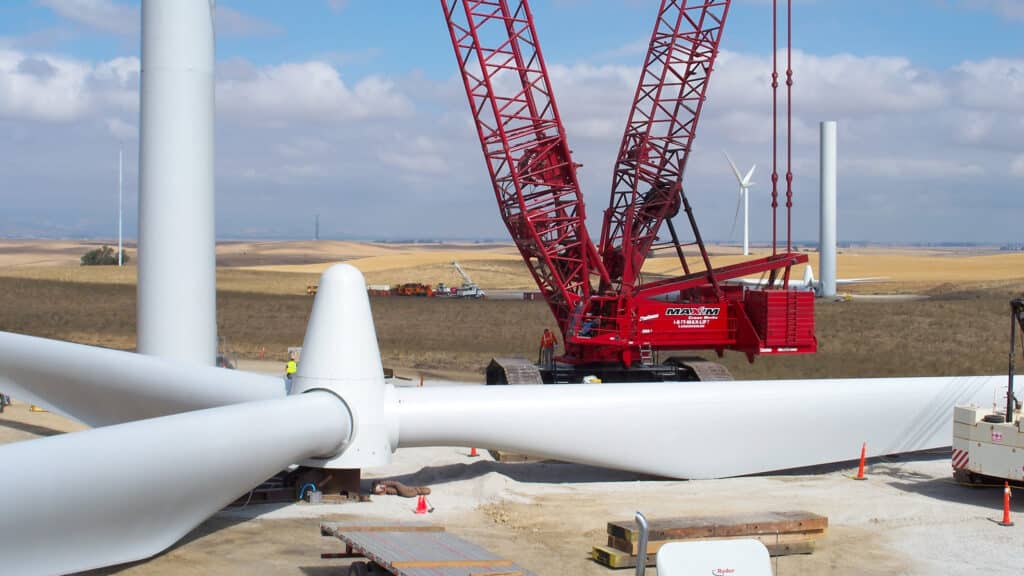
As we’ve explored the diverse array of crane types and their applications, it’s clear that the success of your project hinges on selecting the right crane. Maxim Crane stands ready to assist you in making an informed decision, providing not just rental services but a partnership designed to ensure your project’s efficiency and success. Whether your task demands an all-terrain crane for its versatility or a tower crane for its height capability, our extensive fleet is at your service.
Let’s elevate your project together. Contact us today to learn more about our crane rental services, specialized rigging equipment, and comprehensive project support. Explore our offerings and let our experienced team guide you to the perfect heavy lifting solutions for your project.
Reach out now and take the first step towards a seamlessly executed project with Maxim Crane, where your success is our highest priority.


